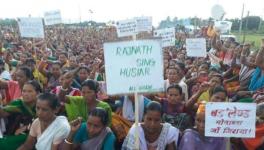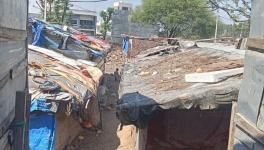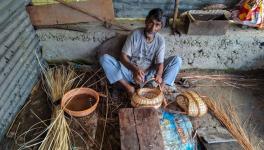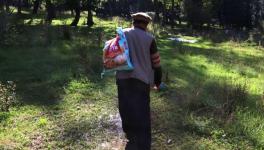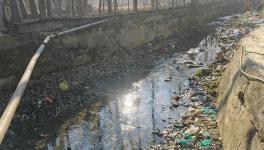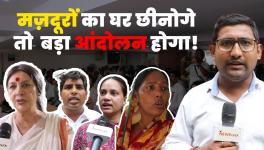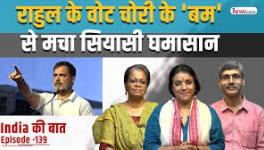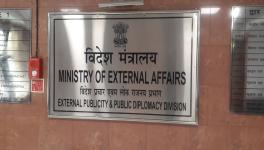J&K: Chenab Valley Seeks Separate Divisional Status as well as Council
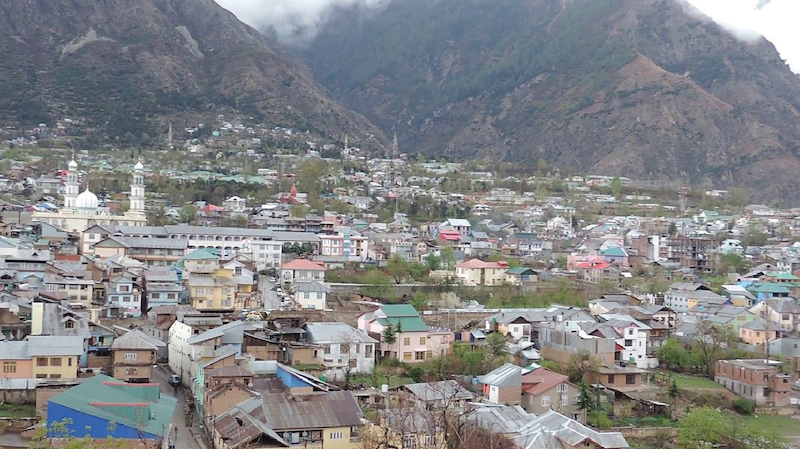
Image Used for Representational Purpose Only
Amid the rumours that something big is going to happen in the Union Territory of Jammu and Kashmir, a renewed voice has emerged from the Chenab Valley situated in the Jammu province.
For the last two months, speculation has been ongoing anticipating some sweeping changes in the demography of Jammu and Kashmir.
In the thick of this speculation is the Chenab Valley, demanding a Separate Divisional status.
The Chenab valley is a colloquial reference to the three districts of Doda, Kishtwar and Ramban in the Jammu province.
The name was first mentioned in a journal, 'The Relief Chronology of Chenab Valley' by Erik Norin in 1926, and later popularised by various social activists, politicians, etc. There are some departments which differentiate the Chenab region of Jammu province as Chenab Division, like the Central Water Commission (CWC) and various others.
The valley is surrounded with mountains and shares borders with Kashmir's Anantnag district in North, Kulgam district in West and Chamba district of Himachal Pradesh in the southern side.
The Chenab valley has a population of 9.24 lakh as per the 2011 Census, of which 4.10 lakh population is of Doda district, 2.31 lakh is of Kishtwar and 2.84 lakh is of Ramban district. It has six Assembly constituencies and various delegations regarding bifurcation and creation of new constituencies have met the delimitation commission on their four-day tour of J&K this month. The trio of districts are administered by nine sub-divisions and 36 tehsils.
Separate Divisional Status and Hill Development Council demand
The Separate Divisional Status demand was initiated in the early 2000s by civil societies of the erstwhile Doda district, which is now bifurcated into three districts, viz. Doda, Kishtwar and Ramban. After Ladakh got Divisional Status, the movement for separate divisional status for the Chenab Valley increased and various politicians even promised Divisional Status for the Chenab Valley, including former Chief Minister Omar Abdullah.
Also read: Kishtwar: Silence Enforced, Anger Simmers
But for decades, the demand of social and political activists, civil society and other organisations citing that Chenab Valley is a neglected part of the Jammu division in all aspects of developmental priorities, has remained unfulfilled.
Advocate Hassan Babur Nehru, a well-known lawyer from Doda district and the founder of Ababeel trust, explained the developmental negligence of this region, especially in three sectors: the health sector, the education sector, and the roads.
He said in a live broadcast on the Facebook page of The Chenab Times that all the funds which come in the name of development get utilised by corruption.
Adv Babur said, “Divisional status is imperative for Chenab Valley for judicious utilisation of funds for development of Doda, Kishtwar and Ramban at par with other districts of J&K. Having a Divisional Commander stationed in Chenab Valley will save time and help in proper planning. This is the most under developed belt of J&K because of poor planning and execution of work projects. Be it road connectivity, internet facilities, health and educational sector, we are lagging behind in all spheres."
Asif Iqbal Butt, a research coordinator at Indian Youth Congress, said, "Chenab Valley deserves separate division, as if we go by statistics, our population is 10 times more than Ladakh, with an area spreading over 9,000 square kilometres. We have been neglected by Jammu as well as Kashmir based politicians, Public of this region is being deprived of basic facilities, like roads, medicare and potable water."
According to Bhupinder Singh Rana, president of Anti-corruption Jammu province of the International Human Rights Organisation, “Chenab Valley's Separate Divisional Status and Hill Development Council are essential in order to increase developmental funds, employment, and other factors."
Sadaket Ali Malik, a socio-cultural activist from Bhalessa, said, "Demand for the Hill Council status is justified by the economic development of the Chenab Valley. Most of the developmental issues will be sorted out by the Hill Council and Pahari reservation for all the western pahari dialects, such as Bhaderwahi, Bhalessi, Paadri, Sarazi, Pogli, Bodhi etc, spoken by the majority of the people, would be more beneficial. "
Also read: Chenab Valley: ‘A Volcano That Can Erupt Anytime’
He added that, "The majority of the ethnolinguistic people are in Chenab which has been a point of contention and a matter of debate since such evidence of being pahari is found in majority of the Linguistics surveys conducted by linguists like Abraham Grierson, Peterhook and many more."
Commenting on this issue, Raja Irfan, a photojournalist based in the Bhalessa area of Doda district, he said, "More than six hydroelectric power projects are functioning in the Chenab Valley's trio of districts. But after generating more than 1,000 mega watts of power from our resources, we suffer from power cuts and many villages in our district are not electrified. We have sapphire mines in Kishtwar district known as 'Neelam'. Kishtwar is also known for its rich quality of saffron. But after having all these, our areas are still backward. Our people are always neglected by Jammu and Kashmir based politicians. We have our own identity, our own culture, but due to our alignment with Jammu, we are always ignored. "
According to reports in the Indian Express and the Times of India, former Chief Minister Omar Abdullah had promised two separate division statuses for Pir Panjal and the Chenab Valley in February 2019.
Delay in demand due to Abrogation
Meanwhile, the August 5, 2019, decision for abrogation of the special status of the erstwhile state of Jammu and Kashmir has affected every single resident of J&K. Three former CMs, including Omar Abdullah, were detained and the economy crushed due to this decision of the ruling Bhartiya Janata Party government.
However, some restrictions were eased in the Chenab Valley just 10-12 days after the abrogation of Article 370. Mobile internet and calls were still barred. Only the landlines were working. Protests and other forms of expression were almost entirely prohibited.
After getting through the trauma of the months-long lockdown, the COVID-19 pandemic and subsequent nationwide lockdown was announced in March 2020, restricting people from leaving their homes. Mobile phones and the internet were operational at this time.
The demand for 'separate Divisional Status for Chenab Valley' has increased again in 2021, and people have turned to social media platform, Twitter, to express their concerns about the discrimination amid the COVID-19 pandemic. Recently, a huge number of Twitter users from the Chenab Valley used the hashtag #WeWantDivisionalStatusForChenabValley and tweeted about the issues they are facing currently, which started after Adv Hassan Babur Nehru's livestream on The Chenab Times, a news portal promoting the Chenab region of Jammu and Kashmir.
(The writer is a journalist and founder/editor in chief of The Chenab Times. The views are personal.)
Get the latest reports & analysis with people's perspective on Protests, movements & deep analytical videos, discussions of the current affairs in your Telegram app. Subscribe to NewsClick's Telegram channel & get Real-Time updates on stories, as they get published on our website.









